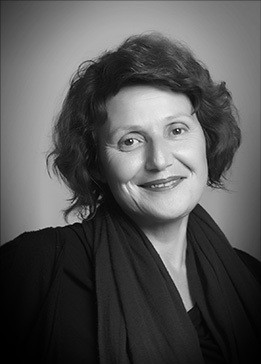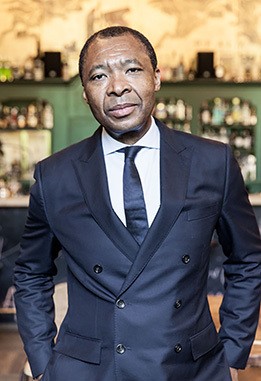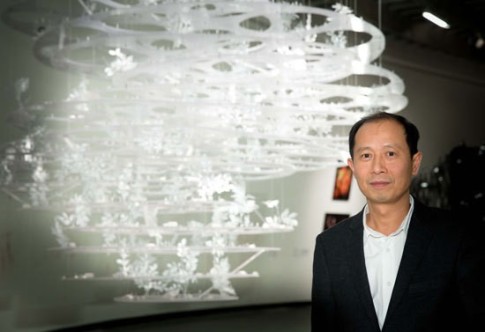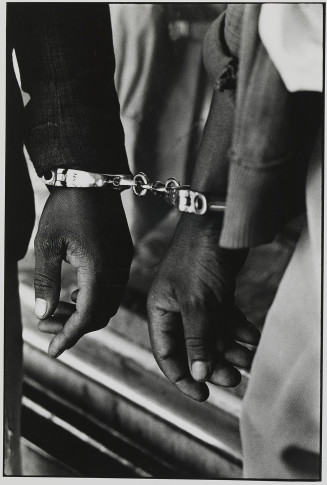
Fulya Erdemci
STOCKHOLM 8 MARCH 2014 AT 2 PM
In the Cinema, admission free
In English
Fulya Erdemci was among the first directors of the Istanbul Biennial (1994-2000). She served as the director of Proje 4L in Istanbul (2003-2004) and worked as temporary exhibitions curator at Istanbul Modern (2004-2005). She curated the ‘Istanbul’ section of the 25th Biennale of São Paulo in 2002, and joined the curatorial team of the 2nd Moscow Contemporary Art Biennial (2007). Erdemci initiated the ‘Istanbul Pedestrian Exhibitions’ in 2002, the first urban public space exhibition in Turkey and co-curated the second edition in 2005 with Emre Baykal. In 2008, Erdemci co-curated SCAPE, the 5th Biennial of Art in Public Space in Christchurch, New Zealand with Danae Mossman. Erdemci has served on international advisory and selection committees, including MAXXI – the National Museum of XXI Century Arts, Rome, 2014; “The International Award for Excellence in Public Art” initiated by the Public Art (China) and Public Art Review (United States), Shanghai, May 2012; the SAHA, Istanbul, 2012; the 12th International Cairo Biennial, Cairo, 2011; and, De Appel, Amsterdam’s, Curatorial Programme ’10/’11 and ’09/’10. Erdemci has taught at Bilkent University (1994-1995), Marmara University (1999-2000) and at Istanbul Bilgi University’s MA Programme in Visual Communication Design (2001-2007).
Abstract, Fulya Erdemci
For the lecture series organized by Moderna Museet aiming to research the possibilities –and the challenges- for the Western art institutions to involve with diverse publics and geographies, I will focus on the conceptual framework and curatorial agenda of the 13th Istanbul Biennial as it directly reflects these questions.
The title of the 13th Istanbul Biennial, “Mom, am I barbarian?” is a quote from Lale Müldür’s book of the same name. The conceptual framework developed under this heading is constructed along three axes: The theoretical axis asks how we can rethink the concept of multiple publics and public domain as a political forum in the light of current conditions. We know that it is not possible to speak of a homogeneous public or of people uniting under a single will. Departing from this point, in the conceptual framework it is asked how these different; and in fact, often contradictory, multiple worlds could come together, coexist, and act together.
As the praxis site, we focused on the spatial components of the democratic apparatus: by investigating urban public spaces in Istanbul, and especially the ongoing, unbridled assault of urban transformation, we considered the spatial manifestations of the concept of freedom together with the concept of agoraphobia.
Müldür’s title “Mom, am I barbarian?” fits into the third axis, which is the sphere of the imagination. It reintroduces the concept of barbarian in today’s context. From a linguistic perspective, ‘barbarian’ is a definition that marks those who cannot speak Greek, and therefore, those who are not citizens. In fact, phonetically, the word barbarian was an onomatopoeia for a language that people in ancient Greece did not understand. In other words, a language they did not comprehend, the language of the ‘other’, the alien, the most excluded and suppressed. From another angle, it is the language of those who are marginalized, illegal, and aspire to debunk or change the system: the recluse, outcast, bandit, anarchist, revolution¬ary, or artist. In the exhibition, out of 88 artists, 50 artists are from non-Western geographies -and histories- including the Eastern Europe. This was not out of courtesy, but, was an outcome of my attempt to anchor the exhibition spatially in time.
Like Walter Benjamin’s angel of history, approaching the future without losing sight of the past can be a method to mark the temporality of the exhibition. In the context of the Istanbul biennial I endeavored to crack open a historical aperture between today and the end of sixties and seventies, in terms of social change, urban transformation and artistic practices.
The most significant common denominator between these two periods is the quest for ‘another world’. These decades also witnessed artists developing new artistic practices challenging urban transformation and gentrification processes in cities such as Paris, New York and Amsterdam. Therefore, for this exhibition, novel artistic practices from 60s and 70s were brought together side by side with more recent practices such as Mierle Laderman Ukeles with Amal Kenawy; Gordon Matta-Clark with LaToya Ruby Frazier; and Stephan Willats with Jose Antonio Vega Macotella.
Furthermore, through the practices of Academia Ruchu in urban public spaces and specifically Jiří Kovanda’s performance Theatre (1976), it became possible to contextualise the current performative protests like Standing Man by Erdem Gunduz within the art historical backdrop of the 1970s. Geographically speaking, due to the education and governmental policies and support, artists from the USA, England and Northern Europe have more possibilities and experience in the field of art-in-public domain. However, when we look what is problematic in the cities and in the urban public spaces in last couple of decades, mostly the Southern hemisphere and the Eastern part of the world appear on the map: Mexico, Brazil, Argentina, Peru, India, Turkey, Palestine, Lebanon, Iraq, Egypt, Tunisia, etc. Hence, in order to reflect the geo-politics of the globe at present and anchor time spatially, in the exhibition I privileged these geographies where the question of public domain and transformation of cities has been a burning issue for the last couple of decades.



